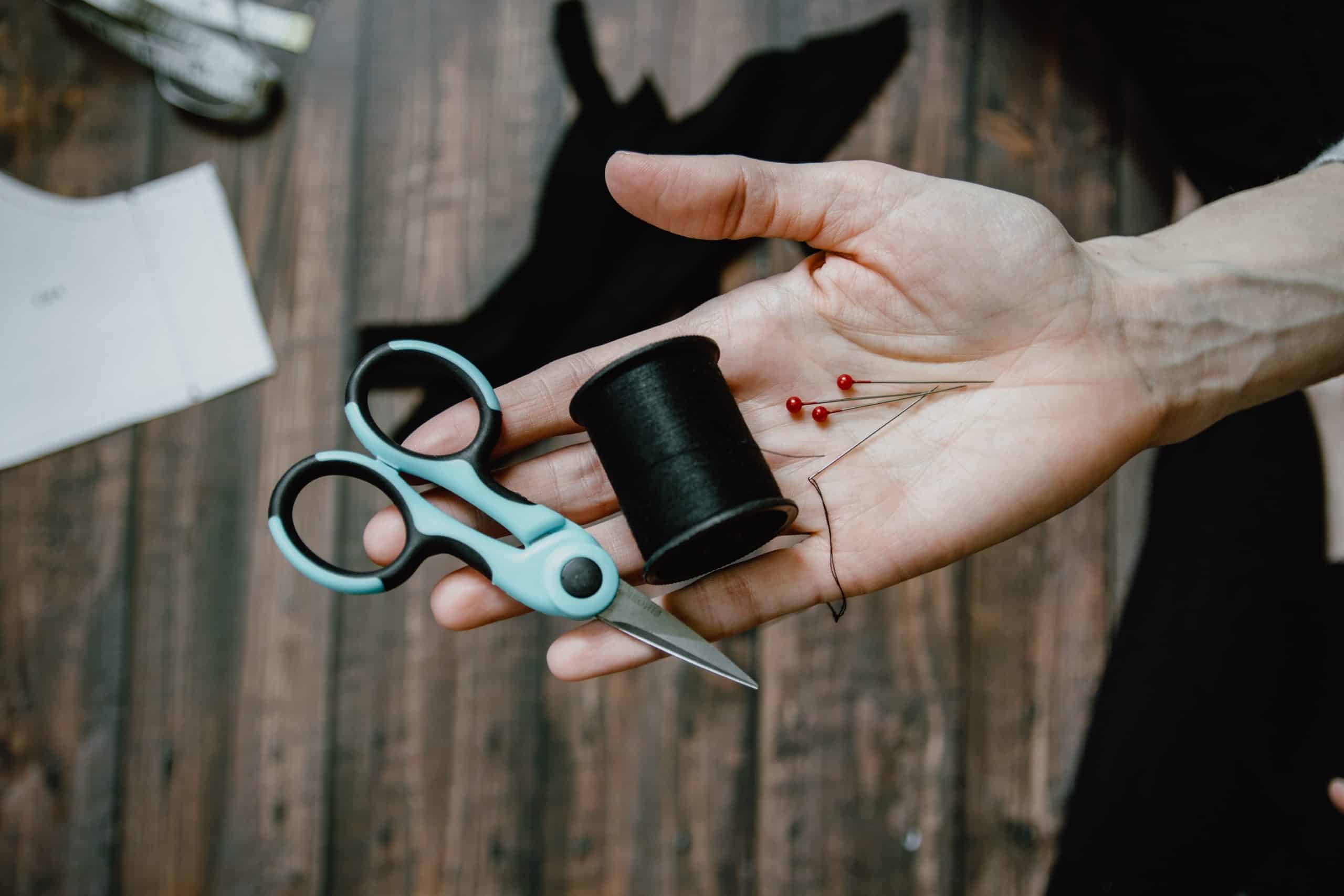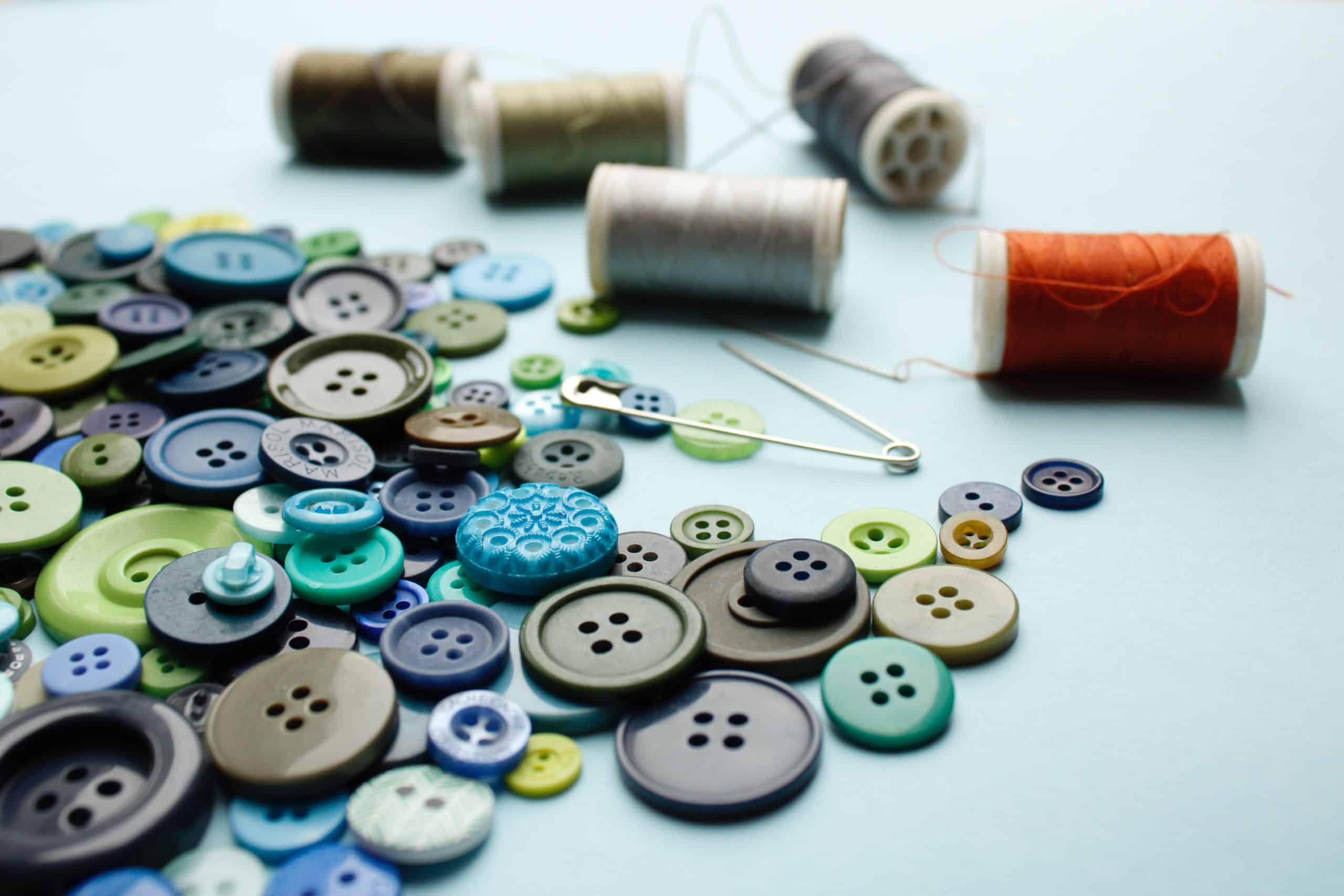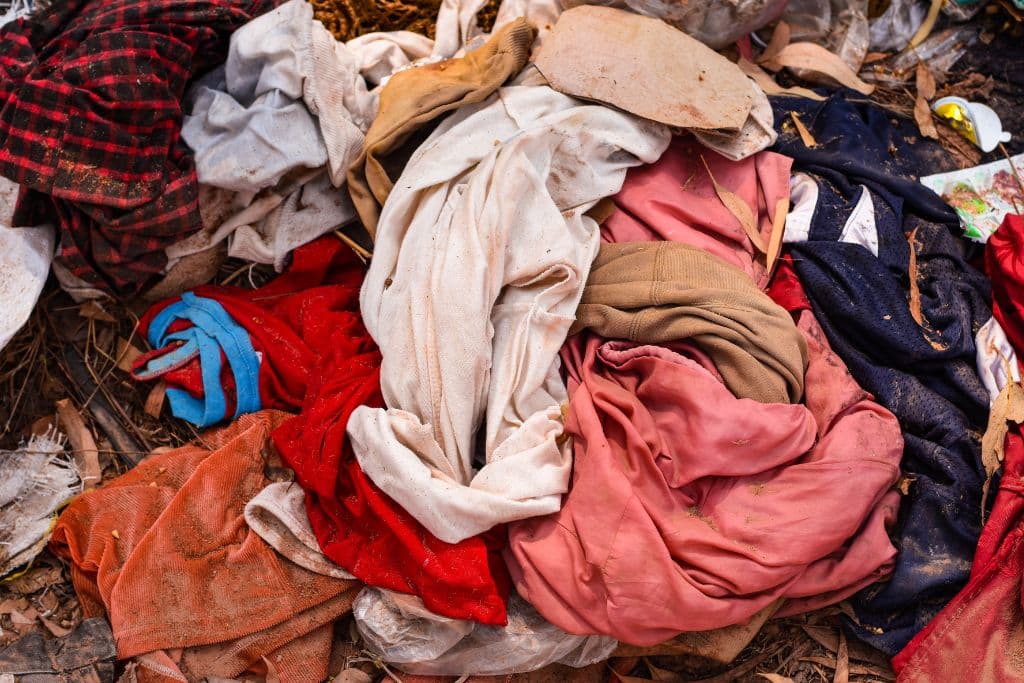Repairing clothes with sustainable sewing projects and mending with embroidery keeps them out of landfills can help address fashion waste, one of the biggest problems of the fast fashion industry.
—
The fast fashion industry is one of the biggest contributors to carbon emissions, pollution, and waste. Fast fashion encourages an extraordinary rate of buying and tossing clothing. Taking care of clothes can keep some of those garments out of landfills. As more people begin to question the impacts of clothing waste on the environment, old values are becoming new habits, and repairing clothes by mending, sewing, or tailoring is growing in popularity as part of the slow fashion movement. Repairing clothes to make them last longer is an affordable way to participate in challenging the excessive production of fast fashion.
Repairing Clothes
Mending is the act of repairing textiles when they wear out or become damaged. However, with mass-produced clothing becoming cheaper and more available in recent years in conjunction with the rise of the fast fashion industry, mending has become a rather tedious and unnecessary practice. Many other modern products followed the same path. Repairs are seen as more trouble than they’re worth.

Photo by Kelly Sikkema on Unsplash
Mending, however, can help slowing down modern clothes-buying habits. It encourages valuing the clothes one owns instead of buying new items every time they wear out. Buying less is a great way to become a more sustainable consumer and is one of the main practices of slow fashion.
Repairing clothing used to be a habit most people had out of necessity. Before fast fashion became a ‘thing’, clothes were more expensive and sturdier and thus more valuable to the average consumer. If you could fix your clothes and give them a second, third, or fourth life, you were making your money last longer, too.
It was common for both men and women to repair clothing, though by the mid-20th century, it had largely become a domestic task that fell to women. Repair work can be tedious, and it wasn’t considered something that could beautify clothes. During the gender equality movements of the 1960s, domestic tasks like mending became symbols of inequity. Giving up mending in favor of buying new clothes became easier as cheap clothes were more available and marketing was more aggressive.
Mending – and many other forms of repair –became a lost skill. Recently, though, repairs have been gaining popularity alongside other craftsman tasks like knitting. As people engage more with slow fashion in an effort to keep clothes in closets instead of landfills, mending has seen a resurgence.
The Environmental Benefits of Repairing Clothes
Repairing clothes for style is all well and good, but does mending actually help the environment? The short answer is yes.
Mending clothes and continuing to wear them keeps them out of landfills, which right now are overflowing with discarded garments. Each year, a staggering 92 million tonnes of clothing waste ends up in landfills. One driver of this waste is the fact that the number of times people wear their clothing has declined by 35% in the last 15 years. People are just wearing garments less before throwing them out. By using patching a pair of jeans or remaking a jacket, you are actually joining a movement that questions reckless consumption.
You might also like: What Is Slow Fashion and How Can You Join the Movement?
Sustainable sewing projects like mending are also a way to develop mindful habits, something many people discovered during COVID-19 lockdowns. As a part of the slow fashion movement, repairing clothes can help you become more aware of your spending and consumption.
Some brands like Patagonia and Chaco are even beginning to offer repairs, fixing customers’ branded items for a fee. Other stores, like Toast in London, offer mending classes and workshops. Even if you hire someone else to make the mend, you’ll know your clothes better. And if you decide to try your hand at a DIY, you’ll learn a new skill and create something more meaningful. Over time, old clothes become long-time friends; there is contentment and satisfaction in knowing those items.
You might also like: Is Hong Kong’s Avant-Garde Textile Recycling Facility a Real Solution to Fast Fashion Problems?
How to Repair Clothes With Embroidery
Particularly popular is the growing practice of visible mending, which has roots in traditions like Japanese sashiko and Indian kantha. Like kintsugi – the Japanese art of repairing pottery with metallic lacquer – the repair itself becomes part of the beauty of the object. Instead of hiding the repair, visible mending shines a spotlight on it, valuing the history of the object.

Photo by Merve Sehirli Nasir on Unsplash
Visible mending takes old, worn clothes and transforms them. Mending with embroidery or bright-coloured thread makes the piece of clothing feel new and unique. This sort of mending also tells a story about the clothes, pointing to their past, present, and future lives. It can be a way to better understand a world with a little less consumption and a little more sustainability.
As a modern fashion movement, visible mending also celebrates individual style and taste. Repairing clothes makes them unique to you, and it may inspire people to ask about the stories in your denim jacket. But visible mending has a history spanning back hundreds of years. Its resurgence now as a sustainable habit can build on the cultural and artistic decades of the past. Because stories are so visible with this kind of mending, it’s easy to see how it is becoming a climate movement, too.
Final Thoughts
For some members of older generations, thinking of mending as a climate-positive habit could feel strange. These were habits and practices deemed too mundane to continue, after all. But recent studies show that the desire to be more sustainable is present across generations.
Our leisure habits are indicating an interest in repair work, too. In the UK., the show Repair Shop regularly garners more than 7 million viewers per episode, and #visiblemending has more than 20 million views on TikTok (#clothingrepair has another 19 million).
Fast fashion and the marketing machine that drives it tells us that clothes are disposable. But historical practices claim otherwise, presenting a proven record of the ways fashion and mending don’t have to be mutually exclusive. Fixing the hole in your favorite sweater may seem mundane, but in reality, it’s an act of joy and pro-environmentalism. Embracing imperfections in our clothes may help us change our way of thinking, helping us look for solutions to other problems with the same creative drive.
You might also like: 16 Most Sustainable Fashion Brands to Support in 2022














